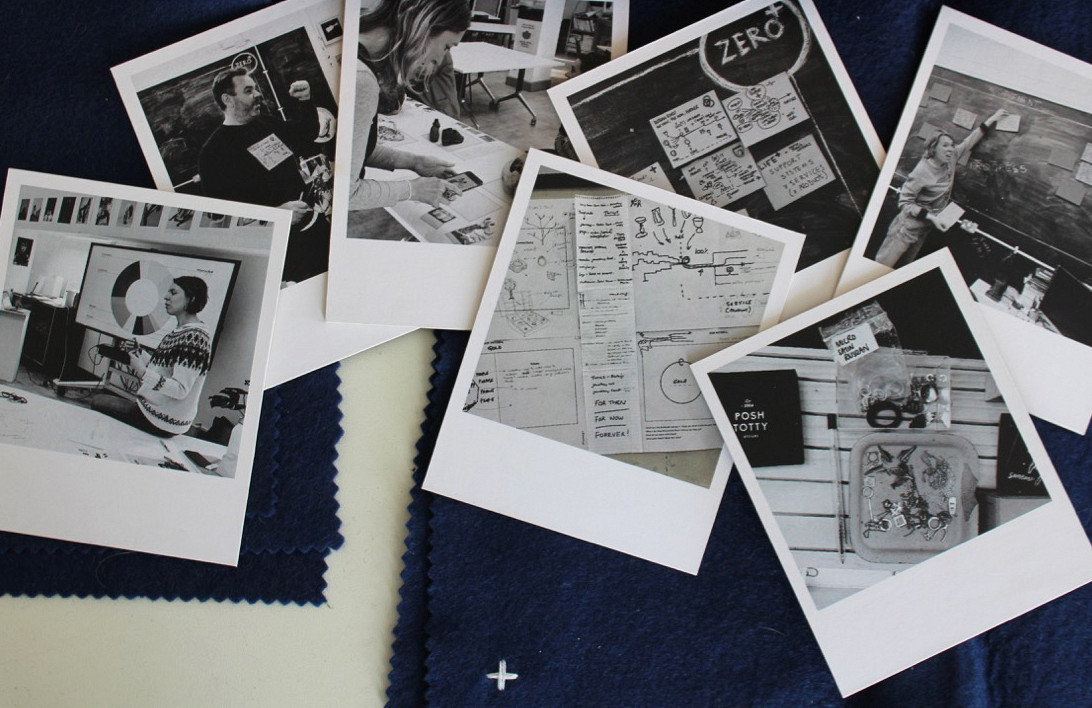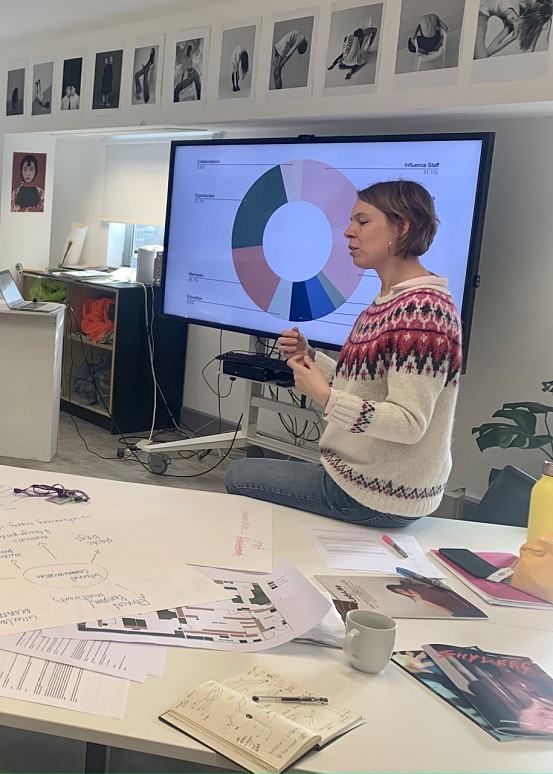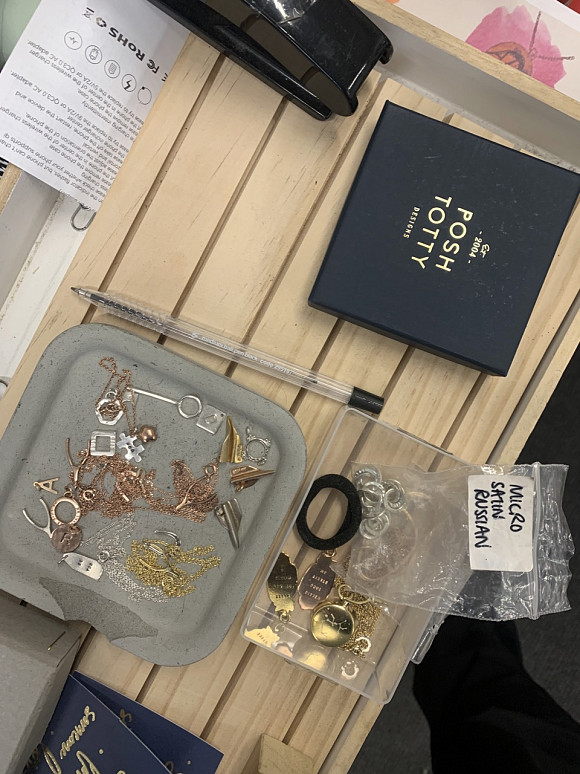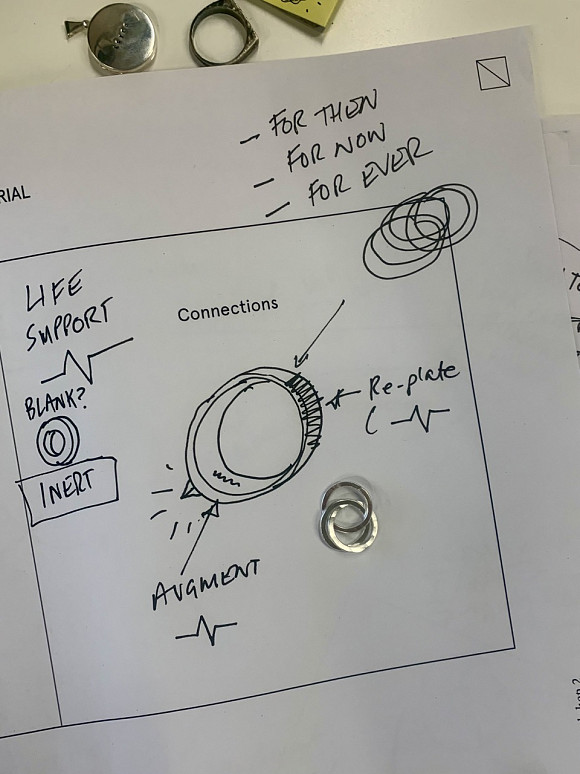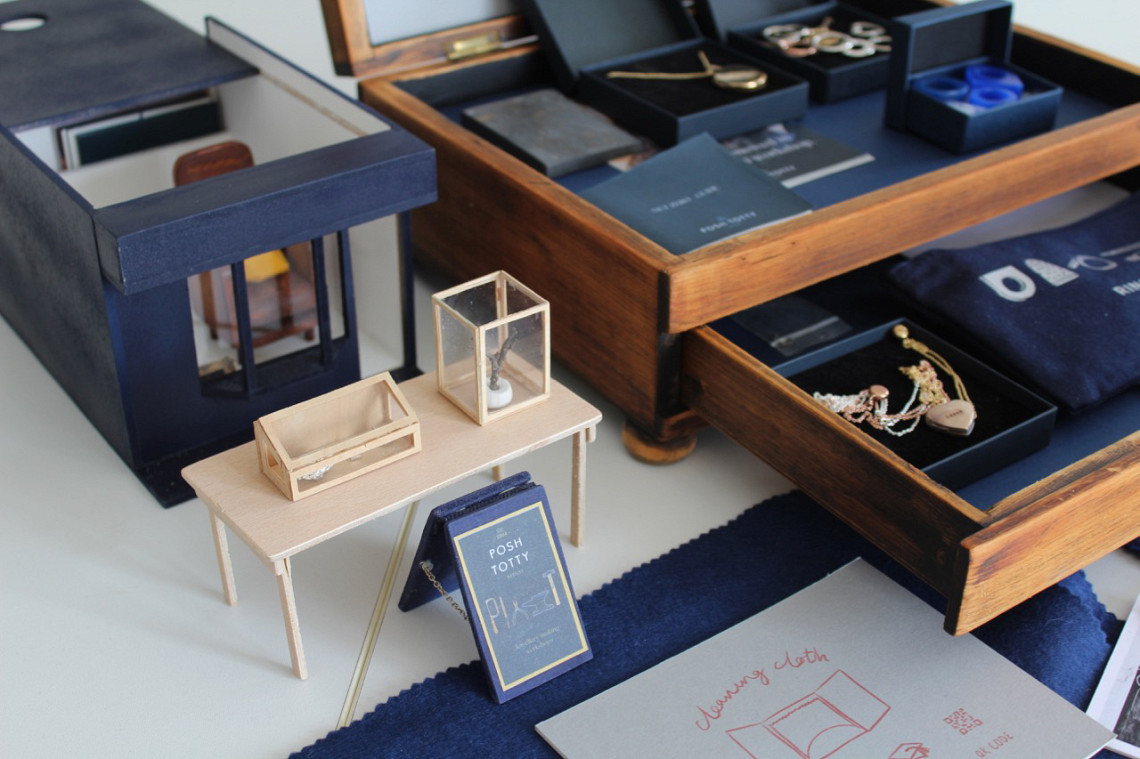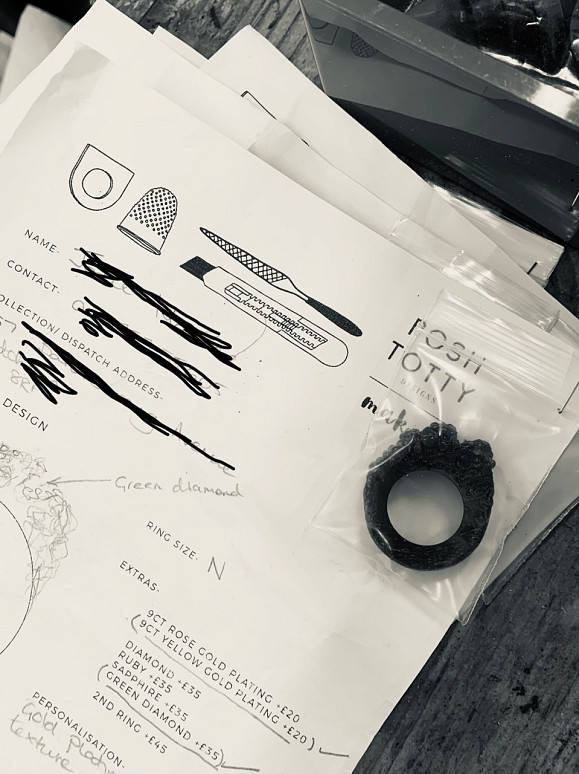Help
Community21 has selected some case study communities and projects to share across the network to inspire and inform others. Should we be featuring yours? If so get in touch.
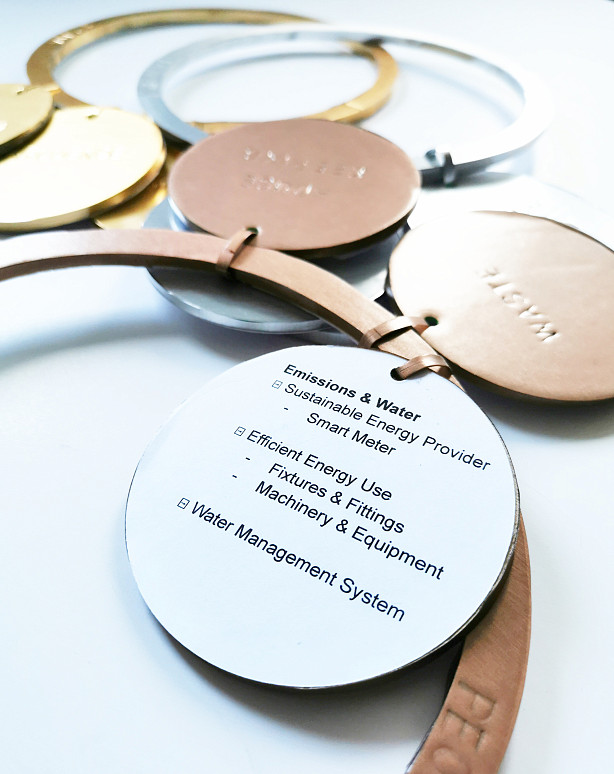
Our expert team are working with successful jewellers Posh Totty Designs as part of a new national design research programme, The Future Observatory.
Running until May 2022, The Future Observatory programme is backed by the Design Museum, UK Research and Innovation (UKRI) and the Arts and Humanities Research Council (AHRC), as well as the Department for Business, Energy and Industrial Strategy.
Sustainability provides the key driving principle for the programme's foundation year, exploring how design research can help small and medium-sized enterprises (SMEs) maintain profits while also working towards Net Zero or other beneficial environmental outcomes. Working under the banner of 'Making better by design', University of Brighton design research practitioners Emma Collins (Design Associate) and Nick Gant (Principal Investigator) will help Posh Totty Designs deal with practical challenges around translating net zero principles into a material based business context.

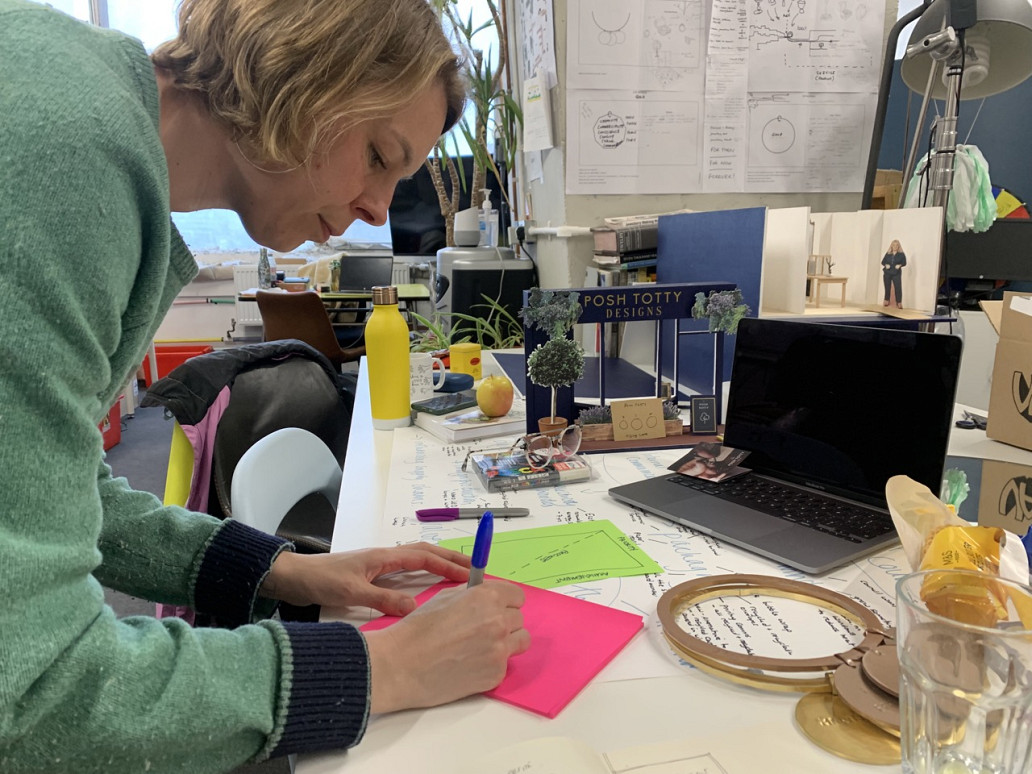
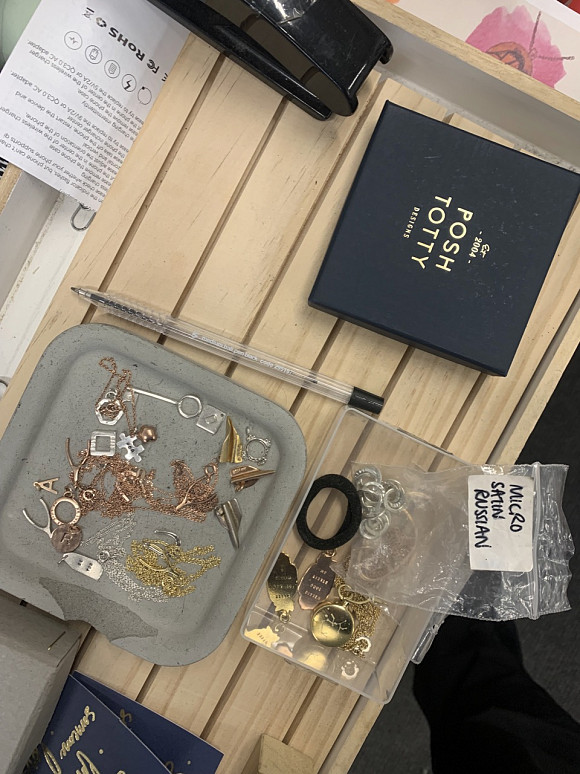

Posh Totty Designs was founded by Brighton-based maker Alice River Cripps, and now has outlets in London as well as a flagship shop in the city's North Laine area. The collaboration with University of Brighton is one of 15 AHRC Design Exchange Partnerships that have been launched around the UK.
Emma Collins, Lecturer in Art and Media at the University of Brighton, is lead researcher on the project. She said: “We are using making as a way of connecting with Posh Totty. By utilising a shared design language and a bit of ‘dirty prototyping’, we are creating tangible ways to allow them to understand NetZero+, set their own goals and communicate their understanding and ambitions with their local and national communities.”
Katie Oakey, Brand Project Lead at Posh Totty Designs, said: “As a small SME, the subject of Net Zero has always felt like an insurmountable feat for us to tackle. While we have tried our best to implement more green measures throughout our business, there's always pressure we could and should be doing more to reduce our impact on our planet.
“When the opportunity to partner with sustainability academics at Brighton University arose, we jumped at the chance. While the project is only in its infancy, Nick and Emma have already opened our eyes to new and innovative ways of working. Through researching our processes, Emma has been creating visually engaging tools that will assist us in tackling the topic of Net zero, relevant to both our business at operations level, end product, and the team that create our jewellery pieces.
At the end of the project, we hope to have not only a clear sustainability manifesto, but all the tools needed to make changes to existing processes, as well as direct new ones going forward.”
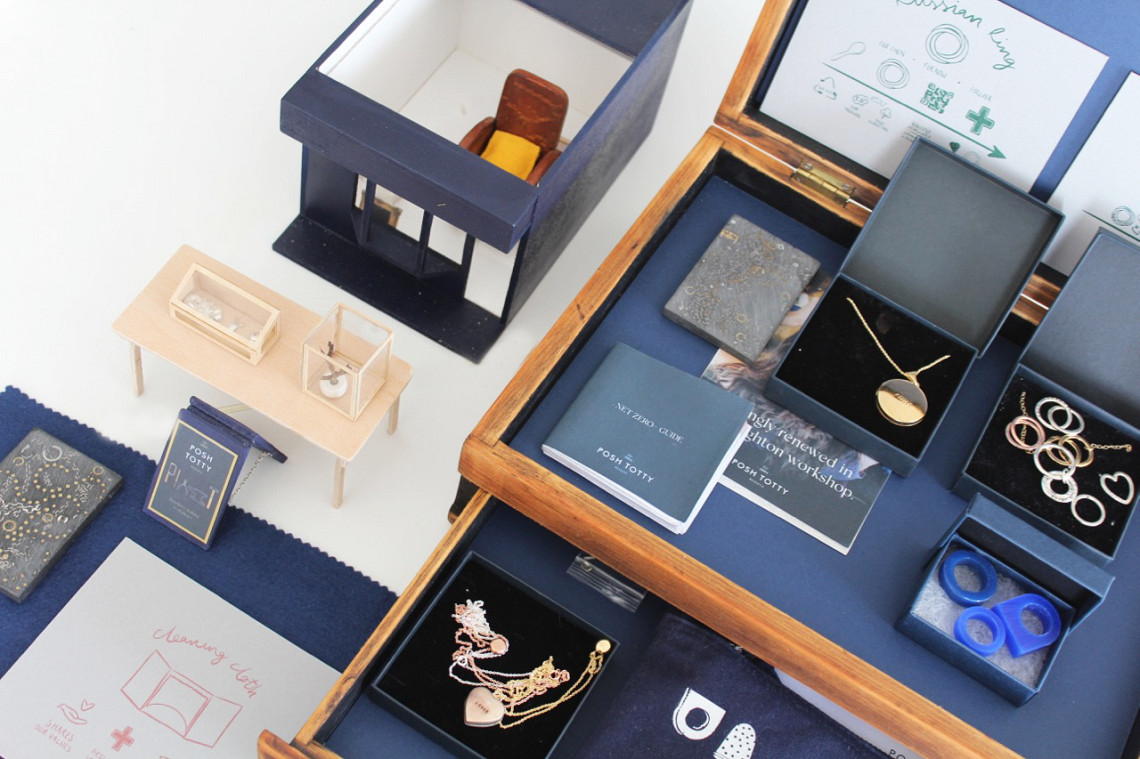
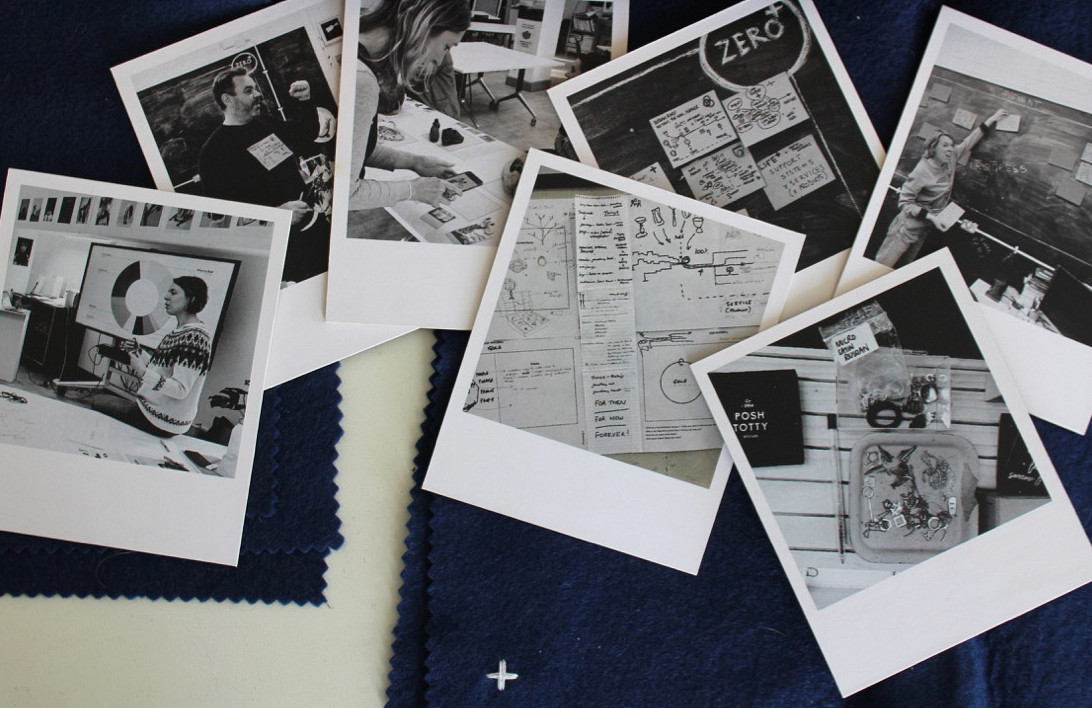
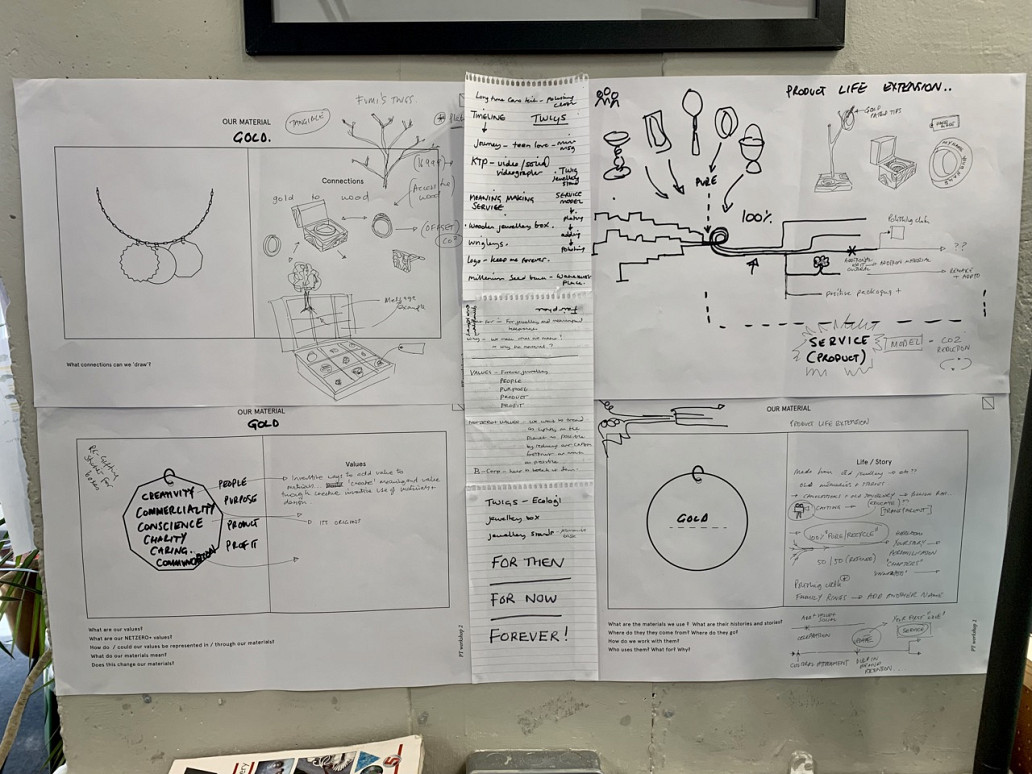
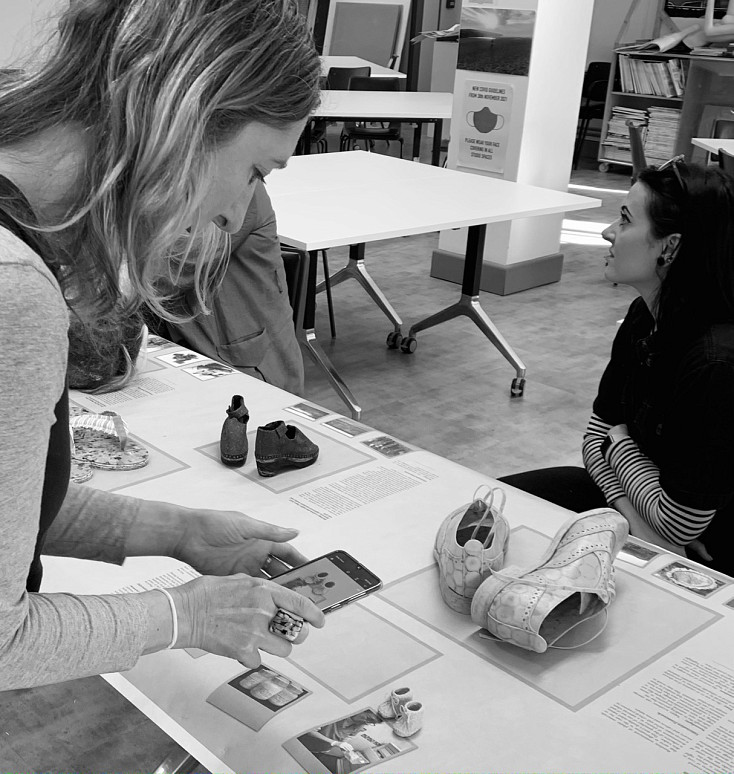

The process involved a range of research and knowledge transfer methods including staff surveys, reviews and mapping of infrastructure,carbon / material flow mapping and intensive, reflective group workshop and making sessions. These sought to provide baselines and an iterative and incremental critical, creative process that could help unpick the complexity of personal and professional, commercial and conscientious aspirations towards a clear route to NetZero+. This exists within the realities and opportunities of a material focused and product oriented manufacturing business. The team developed interventions using propositional objects (of research)(Walker, 2013), physical design probes (Gaver, 2010) and bespoke approaches to product-life-extension (PLE) (Bakker, et al, 2014), mapping PLE against material flows, consumer and company interactions and thus the business model (Den Hollander, et al, 2012) seeking practical and commercially compatible ‘ways to do sustainable design’ (Chapman and Gant, 2012). ‘Eco-system’ and product ‘service’ mapping continued towards a final business map and route to NetZero+ (as a primary outcome / objective). As situated and practical project-based-research and development (Jonas, 2015) all the design elements for this project deliberately referenced Posh Totty’s own design language - This included staff surveys and printed materials, made objects as well as the themes of co-design workshops and talks. In this way design went beyond defining and responding to questions and became the way to speak the same language. This facilitated a clearer understanding forPosh Totty around the meaning of NetZero+ and how to synthesise and embody elements of the critical and reflective, design project into their values, ideals, materials, products and processes.
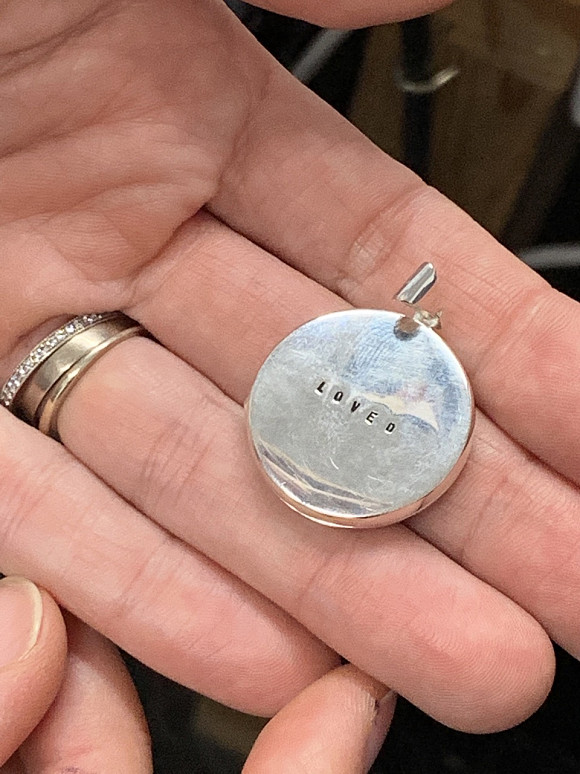

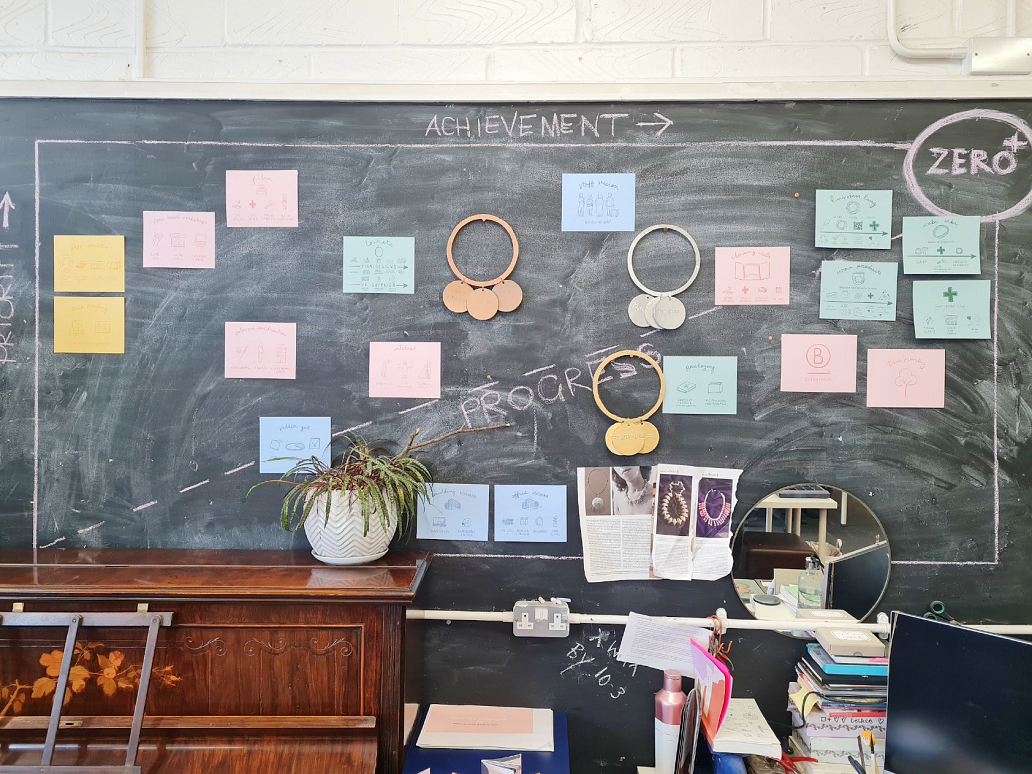
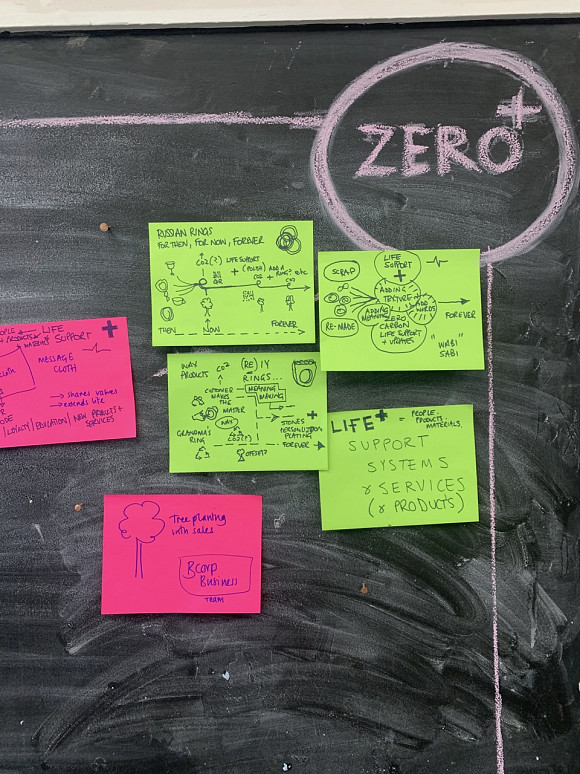
Headlines of actions taken/to be taken as a result of the project. - New Job Role: Sustainability Jeweller: ‘Actively work on the sustainability of our jewellery components by minimising those sent to be melted down and re-using them to make new products lines or refill stock. Working in line with company values, research and develop any existing processes to be more sustainable.’ - Introduction of Wabi Sabi product range, using ‘file not fire’ to reuse ‘waste’ materials. - Reframing the business to include the principle of being a service that promotes a circular economic model of their product. - Revisiting their marketing strategy to share NetZero+ narratives, promote 100% transparency and encourage enhanced service nature of the business - New/temporary job role of videographer to work on visual promotion. - Introduce regifting and forever boxes, products and facilities to increase lifespan of products. - Reduction of a number of waste streams including: pallets/postage labels/plastic bags/silica gel. - Introduction of lab grown/sky diamond gemstones. - Introduction of ‘green objectives’ for every member of staff during appraisals. - NetZero+ Guide to be incorporated in staff handbook, and printed for communal kitchen area.
